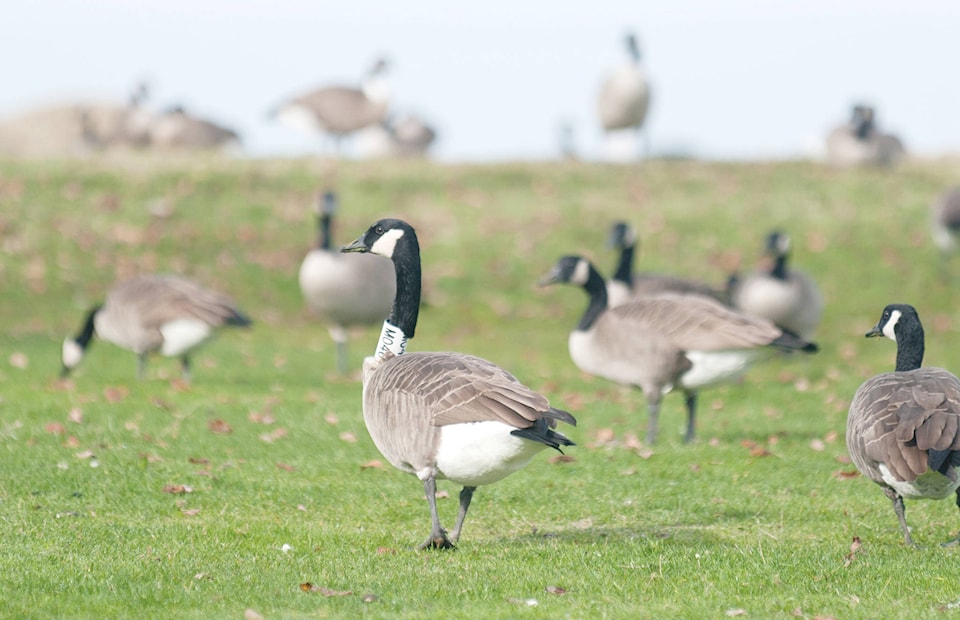For farmers on the Saanich Peninsula, cereal crops like corn are starting to grow. It is a feast for non-migratory Canada geese, but for farmers, it is a headache.
“Because they have a lot of food, in the form of farms, they do really well,” said Ryan Windsor, mayor of Central Saanich.
“They land and nibble on the corn and causes quite a lot of crop damage through late spring and early summer.”
The geese were introduced in the 1960s and 70s by the Canadian Wildlife Service, the provincial Fish and Wildlife Branch, and conservation organizations. A 2012 CRD report states it was a “well-intended program” to establish breeding populations here for wildlife viewing and sport hunting since Canada geese were rare at the time. A 2012 study predicted that by 2018, there would be approximately 10,000 geese in a Goose Management Area (a crescent moon of municipalities with North Saanich on top and Sooke on the bottom).
In an interview, Kevin Fort of the Canadian Wildlife Service said it was common practice at the time, but when the human population grew and settled more land, hunters could no longer fire their guns in these areas. With ideal breeding conditions and few natural predators in the area, the population increased exponentially and began to conflict with human activities. They damage agricultural crops and could strike airplanes, and increase fecal coliform levels in public swimming areas. In addition, they damage local estuaries.
Canada geese in western North America are naturally migratory, but the goslings were brought from other parts of Canada and did not learn to migrate from mature geese, so these geese stayed put. In addition, the introduced geese have become genetic hybrids over the decades, making them a new non-native species.
Unlike deer and other mammals, which are under the provincial Wildlife Act, Canada geese and other waterfowl are also protected by the federal Migratory Birds Convention Act, so the federal government has a say as well.
Fort said the CWS does not mandate population targets, instead leaving that to local working groups that include parties affected by the geese. There are, however, guidelines for how best to decrease the population. Farmers are allowed to hunt geese on their own land during the hunting season, and Fort said CWS continues to encourage this. In the north and mid-island areas, “there is very well-document evidence of damage towards estuary habitats as a result of heavy Canada geese pressure,” said Fort, so CWS has authorized management measures, including hunting. Other measures include egg addling (shaking the eggs to make them unviable or coating them with vegetable oil, eliminating air exchange).
Windsor said he does not plan to introduce anything new at Council because the issue has been considered in years past and they have a strategy.
“I just want to keep it top of mind,” said Windsor.
reporter@peninsulanewsreview.com
Like us on Facebook and follow us on Twitter
